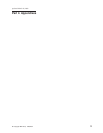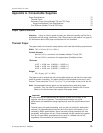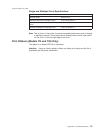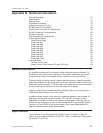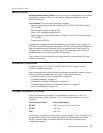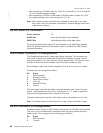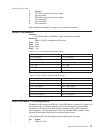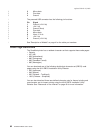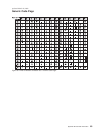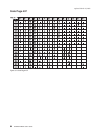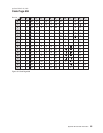
Memory Units
Random access memory (RAM) is used for storing the image data for the thermal
printhead and program code. It is also used for storing incoming data from the
communication port.
Flash memory is used for many purposes, including:
v Character set storage (1600 KB on Models TI5 and TG5, 1100 KB on models
TF7 and TM7)
v Personalized message storage (8 KB)
v Logo or APA message storage (64 KB)
v Flash memory data storage (300 KB on Models TI5 and TG5, 80 KB on models
TF7 and TM7)
v Program code (256 KB)
Personalized messages are those messages that are printed on each receipt in a
POS environment. Storing these messages in the flash memory greatly reduces the
data transmission time to the printer and the processing time of that data by the
microprocessor. This is also true of graphics or APA messages, which require a
significant amount of transmission and processing time.
Flash memory can also be used as a storage place for customer data. This data
could be journal data.
Immediate Commands
SureMark models TI5, TG5, TF7, and TM7 have 16 KB of memory to store
incoming commands and data.
Most commands will be received and then executed sequentially. However, several
commands execute immediately upon receipt. These commands are:
v “Download Graphics (Logo) Commands” on page 109
v “Predefine Messages” on page 111
v “Download User-Defined Characters” on page 112
v “Extended Address Command – Request Printer ID” on page 107
v “Real-Time Requests” on page 156.
Voltage Conversion Circuitry
The printer requires two voltages. The printheads and motors use +24 V dc.
Powering the logic circuitry requires +5 V dc. Printer input voltage is one of the
following:
Communication Mode Power Requirement
RS-485 +38 V dc or +24 V dc, and +5 V dc
RS-232 +24Vdc
USB +24Vdc
In each case, a single dc-to-dc converter converts voltage to +24 V dc and +5 V dc.
An autoswitch circuit on the interface card senses the operating mode (RS-485,
RS-232, powered USB, or standard USB with power brick) and routes input
voltages appropriately.
updated March 18, 2002
Appendix B. Technical Information 79
||
|
|
|
|



